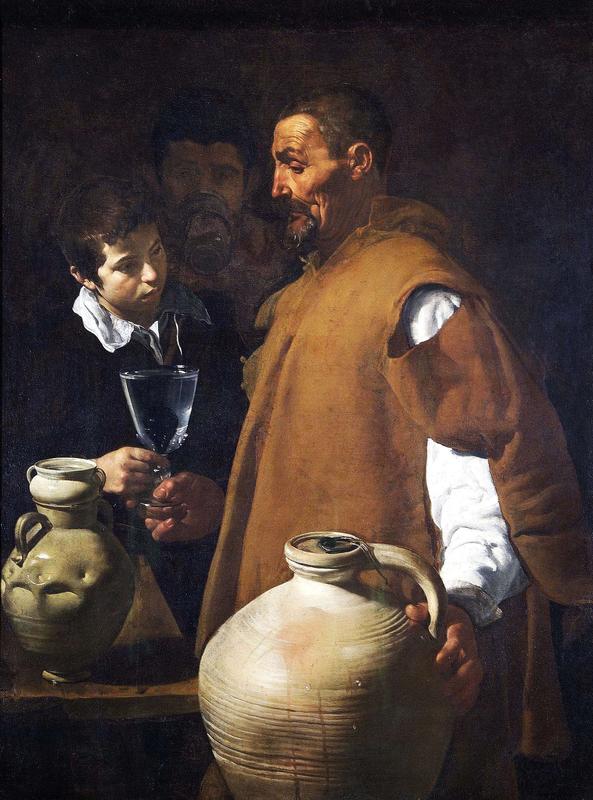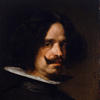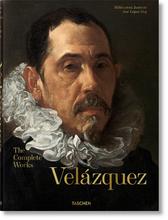More about The Waterseller of Seville
- All
- Info
- Shop

Contributor
Diego Velazquez couldn’t wait to get out of Seville.
In 1623 when he set out for Madrid, he took the Water Seller with him. Maybe it would come in handy. Velazquez was heading up to the capital to paint the King, and if all went well he wouldn’t have to come back. Luckily, King Philip IV was impressed. Diego would steadily rise through the ranks at the Spanish Court. But before any of that happens, Velazquez had a painting to sell.
'Bodegónes' were Diego’s specialty in his early years. They are essentially humble scenes of daily life. They were paintings about the poor, the working men, the water sellers. These bodegónes weren’t even considered art by some, but Diego didn’t care what the bourgeoisie thought of his paintings. He was too talented to fall into that trap. Eventually, his bodegónes became high art. Guess who won that round?
Don Juan Fonseca y Figueroa was a man of the church, a son of Seville. He had known Velazquez’s father and teacher. He had seen the young artist undergo training. So when he heard that Diego was coming to Madrid, he made sure he stayed with him. Sevillan brothers got to help each other out, right?
Velazquez certainly benefited from Fonseca’s royal connections. Turns out, Fonseca was a big man in Madrid. He was the royal chaplain to King Philip IV. With connections like those, Velazquez knew he wasn’t wasting his time. Diego may not have been as ruthless as I’m making him out to be. But, admittedly, he used his opportunities well. The Waterseller of Seville eventually ended up in Fonseca’s private collection and many believe that the painting was made for the chaplain himself. The water jugs could be an allusion to the name Fonseca, which means "dry fountain." Velazquez was trying to appeal to Fonseca’s nostalgia for Seville and he succeeded.
Three versions of the Waterseller have survived four centuries of turmoil. This one is in London, there is one in Florence, and one is heavily guarded through private means. This painting was seized by the French during the Napoleonic wars, taken back by the Duke of Wellington during the Battle of Vitoria. The Spanish Royal Family allowed the British to keep the painting as a sign of appreciation for beating the French. The Waterseller is now a long way from Seville, but can transport you there in your imagination.
Sources
- ARTnews, The Editors of. “Secret Grandeur: Leo Steinberg on an Early Velázquez Masterpiece, in 1971 -.” ARTnews, April 3, 2015. http://www.artnews.com/2015/04/03/secret-grandeur-leo-steinberg-on-an-e….
- Robinson, J. C. "The Bodegones and Early Works of Velazquez." The Burlington Magazine for Connoisseurs 10, no. 45 (1906): 172-83. http://www.jstor.org/stable/856950.
- Tiffany, Tanya J. “Velasquez's Bodegones and the Art of Emulation.” Anuario Del Departamento De Historia y Teoría Del Arte XVIII (2006). https://doi.org/10.15366/anuario.
- Jacobs, Michael. Everything Is Happening: Journey into a Painting. London: Granta, 2016.
- Cumming, Laura. Vanishing Man - in Pursuit of Velazquez. Vintage Publishing, 2017.
- “ Velzquez, Diego (Spanish Painter, 1599-1660), The Waterseller of Seville - NIRP - VADS: the Online Resource for Visual Arts.” VADS. Accessed November 1, 2019. https://vads.ac.uk/large.php?uid=190693&sos=0.
- “The Waterseller of Seville (1618-22).” Waterseller of Seville, Velazquez: Analysis. Accessed November 1, 2019. http://www.visual-arts-cork.com/famous-paintings/waterseller-of-seville….
Featured Content
Here is what Wikipedia says about The Waterseller of Seville
The Waterseller of Seville is the title of three paintings by Spanish artist Diego Velázquez, dating from 1618–1622. The original version is considered to be among the finest works of the painter's Seville period and is displayed in the Wellington Collection of Apsley House. The original version was painted by Velázquez when he was in his late teens or early twenties. Looking at this painting, there is an older man, a young boy, and a bystander in the background. The old man is handing the young boy a glass of water, but they never look at each other, nor do they make eye contact with the viewer.
Check out the full Wikipedia article about The Waterseller of Seville













